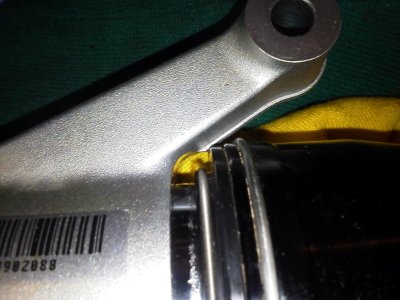OK, I've been measuring parts, doing math, and reading this thread again and some things just don't add up.
First, we are assuming that the correct PFP preload upon install of the comp assembly is 7mm with the cartridge bled and the damper rod fully extended.
The damper rod is 12mm diameter, the PFP piston/bore 36mm. Thats a 9:1 ratio. What that means is that for every 9mm the damper rod moves into the cartridge, the PFP piston will move up (and compress the spring) 1mm. The piston must move the distance that equates to the volume displaced by the damper rod.
Now, the holes in the cartridge are positioned on the edge of the PFP bore, where the lower oring engages and makes its seal. This is 58mm from the top of the cartridge cap, which we will use for reference.
When assembled, the comp assembly cap is flush with the cartridge cap. The distance from the top of the comp assembly cap to the edge of the lower PFP oring is 135mm. What this means is that if you try to overfill and let the piston push the excess out, KYB style, you can theoretically have up to 77mm PFP preload, but you would not be able to close the cap.
The top of the comp assembly cap to the point where the threads just start is 7mm. So, it would seem that with the cartridge bled, and at zero preload, the comp assembly cap would be threaded in the cartridge with just this last 7mm protruding. The problem with this is that you can't push the assembly down past the threads to bleed the system.
Both my cartridges would not stroke completely, and both were different. This means too much oil and different levels. I think thats why some of you guys might be having trouble with travel limitations and harshness, you actually might have a lot more than 7mm PFP preload, especially if you wrestled with the cap. I think that the reference oil volume method is easy to describe but hard to bleed and keep consistent volumes.
I know my fork had way more than 7mm PFP preload, so either the factory fill was wrong or the spec is wrong. What do you guys think, am I off base here?
 There are no obvious adjustments.
There are no obvious adjustments.

